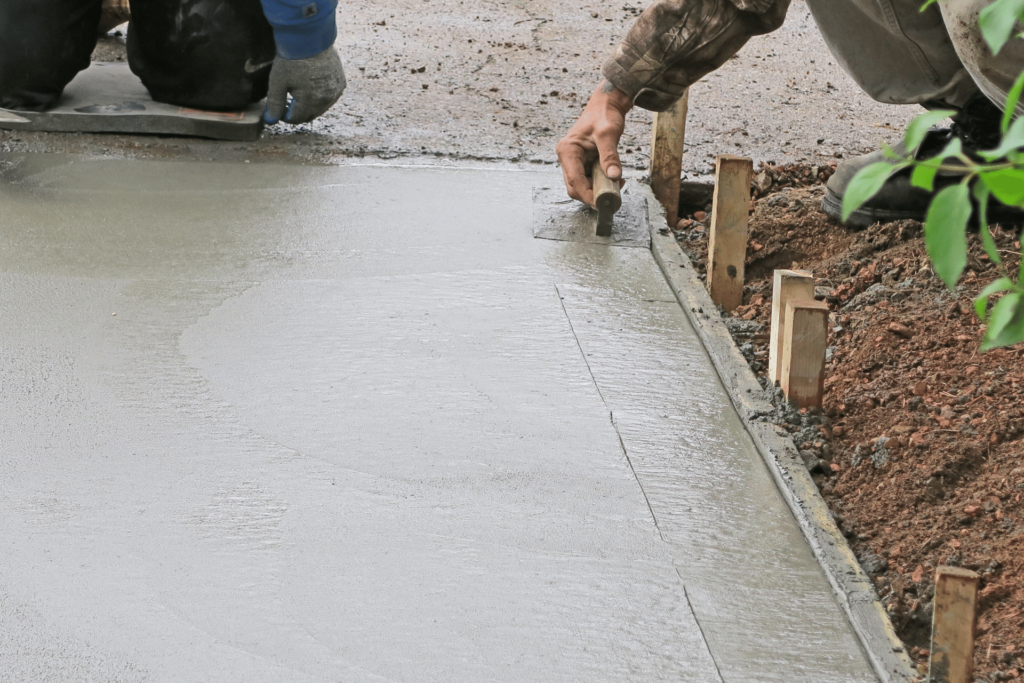Your driveway is more than just a place to park your car; it’s an investment in your home. However, Sarasota’s weather conditions, including high humidity, heavy rainfall, and intense heat, can impact the longevity and performance of the driveways. Understanding how weather affects concrete can help you take proactive measures to maintain it.
Don’t let a damaged driveway diminish your home’s beauty. Get an assessment from the experts today and discover your options for repair or replacement.
Best Concrete Driveway Contractor in Sarasota, FL
📞 Phone: (941) 206-5973
📧 Email: contact@sarasotaconcretecontractorsfl.com

The Effects of Sarasota’s Weather on Concrete Driveways
1. Heavy Rainfall and Moisture Damage
Sarasota receives significant rainfall, especially during the summer months. Excessive water can weaken surfaces, which can lead to cracks, erosion, and foundation shifts. Proper drainage and high-quality sealing help protect against moisture-related damage.
2. High Humidity and Mold Growth
With Florida’s high humidity levels, mold and mildew can develop on the surface. Over time, this can cause staining and structural weakness. Regular cleaning and applying a moisture-resistant sealant can prevent these issues.
3. Intense Sun Exposure and Heat Expansion
Florida’s strong UV rays can cause surface discoloration and drying shrinkage. Additionally, extreme heat can lead to thermal expansion, which may result in small cracks. Using reflective coatings and light-colored cement mixes can help mitigate sun-related damage.
4. Hurricane-Season Challenges
Hurricanes and tropical storms bring excessive moisture, high winds, and debris that can damage a pathway. Reinforced surfaces with proper reinforcement and sealing can improve durability against such extreme conditions.
5. Temperature Fluctuations and Cracking
While Sarasota generally has warm temperatures, occasional cold spells can cause surfaces to contract, leading to cracks. A professional concrete driveway contractor uses a high-quality mixture designed for Florida’s climate to prevent this issue.

How to Protect Your Concrete Driveway from Weather Damage
- Apply a High-Quality Sealer
- Ensure Proper Drainage
- Use Reinforced Concrete
- Schedule Regular Maintenance
- Choose the Right Cement Mix
Reliable Installation and Repair Experts
Sarasota Concrete Contractor provides high-quality installation and repair services throughout the greater Sarasota area. They use premium materials and industry-proven techniques to deliver lasting results. Whether it’s a new installation or necessary repairs, their reliable solutions ensure durability and performance.
Call now to get a free quote!
Contact Details:
Phone: (941) 206-5973
Email: contact@sarasotaconcretecontractorsfl.com
FAQs
1. How often should I seal my concrete driveway in Sarasota?
It is recommended to reseal your surface every 2-3 years to protect against weather damage.
2. Can humidity cause my driveway to crack?
Humidity itself doesn’t cause cracks, but excessive moisture combined with poor drainage can weaken surfaces that can lead to damage over time.
3. What type of concrete is best for Florida’s weather?
A mix with high compressive strength, proper air entrainment, and moisture resistance is ideal for Sarasota’s climate.
4. How can I prevent water from pooling on my driveway?
Installing proper drainage channels and ensuring the pathway has a slight slope can prevent water accumulation.
5. What are the signs that my driveway needs repair?
Cracks, spalling, pitting, and discoloration are all signs of potential damage. If you notice any of these issues, it’s best to contact the professionals for a consultation.


